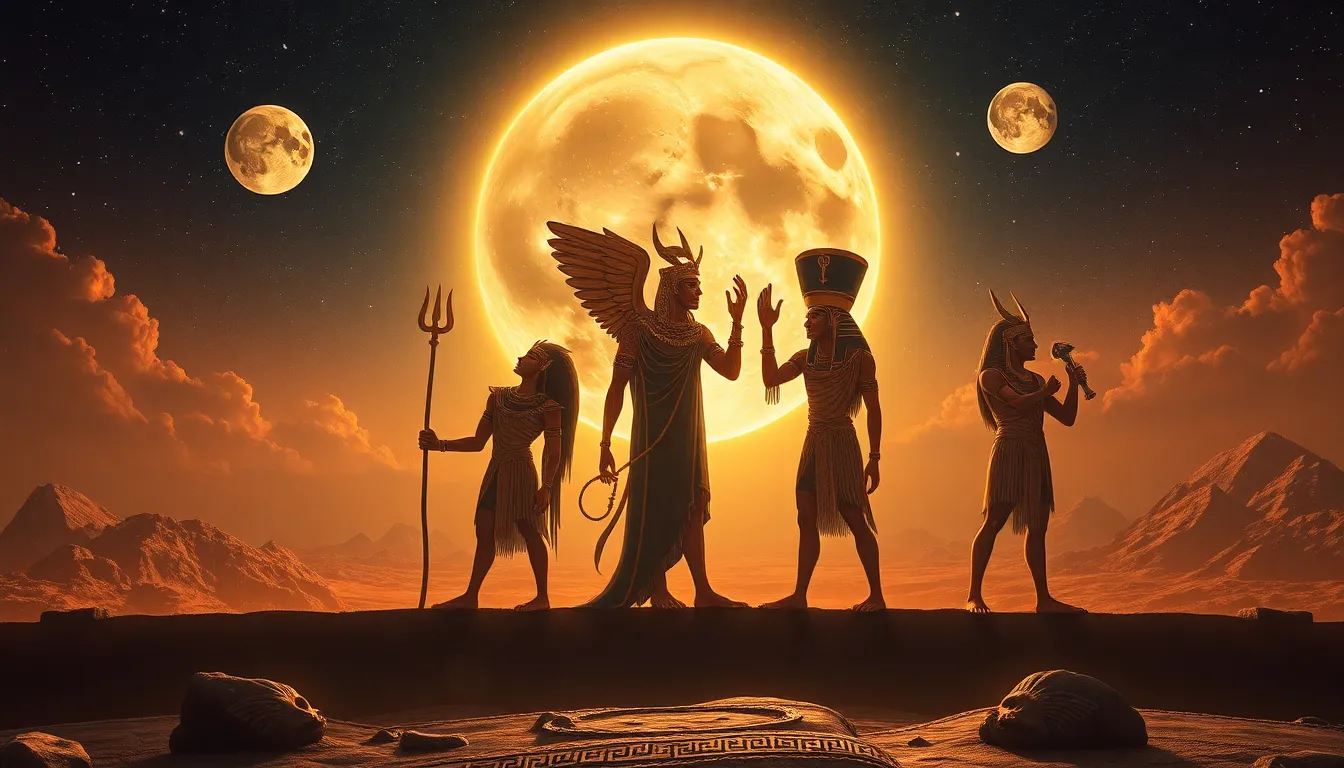The Lunar Legends of the Egyptian Gods
1. Introduction to Egyptian Mythology
Egyptian mythology is a rich tapestry of stories, beliefs, and deities that shaped the culture and spirituality of ancient Egypt. It encompasses a vast range of gods and goddesses, each with their own narratives and significance in the Egyptian pantheon. Among these deities, the moon held a special place in the hearts and rituals of the Egyptians, symbolizing change, time, and the cyclical nature of life.
The moon was considered a powerful force that influenced not only the natural world but also the spiritual realm. Its phases were closely tied to agricultural practices, religious observances, and the rhythms of daily life in ancient Egypt.
2. The Lunar Deities of Ancient Egypt
Several key deities in ancient Egyptian mythology were associated with the moon, each representing different aspects of lunar influence:
- Khonsu: The most prominent lunar god, Khonsu was often depicted as a young man with a sidelock of youth and a lunar disk above his head. He was associated with time and healing, believed to protect travelers at night.
- Thoth: The god of wisdom, writing, and magic, Thoth was often depicted as an ibis or a baboon. He was associated with the moon and credited with the creation of the calendar, as well as being a mediator between the gods.
- Isis: Although primarily known as the goddess of motherhood and magic, Isis also had lunar associations, particularly in her role as a protector of the dead. She was often depicted with a throne-shaped headdress and was believed to have healing powers linked to the moon.
Each of these deities possessed unique attributes and symbols that reflected their lunar associations, reinforcing the moon’s significance in Egyptian cosmology.
3. The Moon’s Influence on Egyptian Life
The impact of the moon on Egyptian life was profound, particularly regarding agriculture and daily activities. The lunar calendar played a crucial role in determining the timing of planting and harvesting crops. Farmers observed the phases of the moon to optimize their agricultural practices, believing:
- New Moon: A time for planting seeds.
- Full Moon: A period for harvesting crops.
- Waxing Moon: Associated with growth and fertility.
- Waning Moon: A time for rest and preparation.
Additionally, the Egyptians believed that lunar phases could influence human behavior, emotions, and even events. Certain phases were thought to bring good fortune, while others were seen as unfavorable.
4. Myths and Stories of the Moon
Many myths in Egyptian mythology involve lunar deities and their adventures. One of the most notable stories is that of Khonsu’s journey across the night sky. According to the myth, Khonsu traveled each night, illuminating the darkness and safeguarding the world from chaos. This journey symbolized the passage of time and the eternal cycle of life and death.
Another important narrative involves the moon as a symbol of rebirth and renewal. The moon’s phases were interpreted as a metaphor for the cycle of life, death, and resurrection, reinforcing the belief in immortality and the afterlife.
5. The Connection Between the Moon and the Afterlife
The moon’s influence extended into the realm of the afterlife, shaping Egyptian beliefs about death and resurrection. The lunar cycle was seen as a reflection of the soul’s journey after death, mirroring the transition from life to the afterlife.
Lunar beliefs were deeply integrated into funerary practices and rituals, where the moon symbolized the hope of rebirth. The deceased were often associated with the moon, with the belief that their souls would find renewal in the lunar light.
6. Lunar Festivals and Celebrations
The Egyptians celebrated various festivals dedicated to their lunar deities, with one of the most significant being the Festival of Khonsu. This festival included:
- Processions and feasts to honor Khonsu.
- Rituals aimed at ensuring the protection of travelers.
- Offerings and prayers for health and prosperity.
These celebrations highlighted the cultural importance of lunar deities in Egyptian society, reinforcing community bonds and spiritual connections.
7. The Intersection of Astronomy and Mythology
Ancient Egyptians were keen observers of the night sky, and their understanding of astronomy greatly influenced their mythology. The lunar cycles were meticulously tracked, and this knowledge informed their religious practices and agricultural schedules.
The relationship between astronomy and mythology is evident in the alignment of temples and structures with celestial events. For instance, many temples were oriented to capture the light of the moon during specific phases, enhancing the mystical experience for worshippers.
8. Conclusion: The Enduring Legacy of Lunar Legends
The lunar legends of the Egyptian gods continue to resonate in modern culture, inspiring art, literature, and spiritual practices. The themes of rebirth, renewal, and the cyclical nature of existence are universal concepts that transcend time.
Today, the relevance of Egyptian lunar mythology can be seen in contemporary spiritualities that embrace the moon’s symbolism. The enduring legacy of these ancient beliefs serves as a reminder of humanity’s connection to the cosmos and the profound influence of celestial bodies on our lives.




